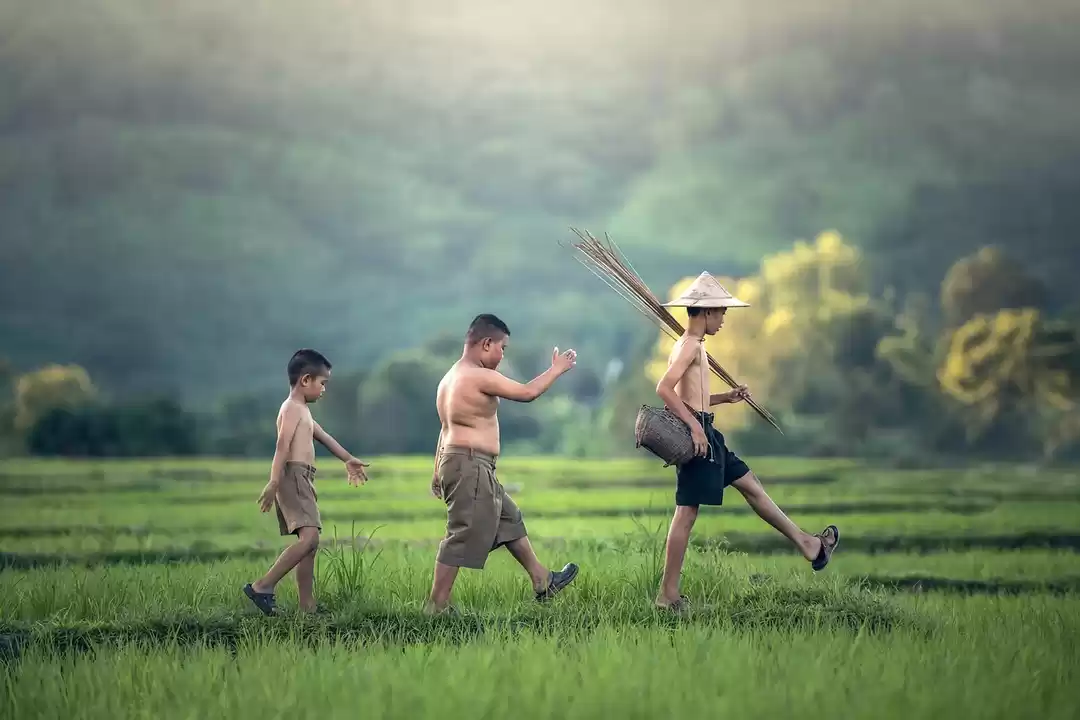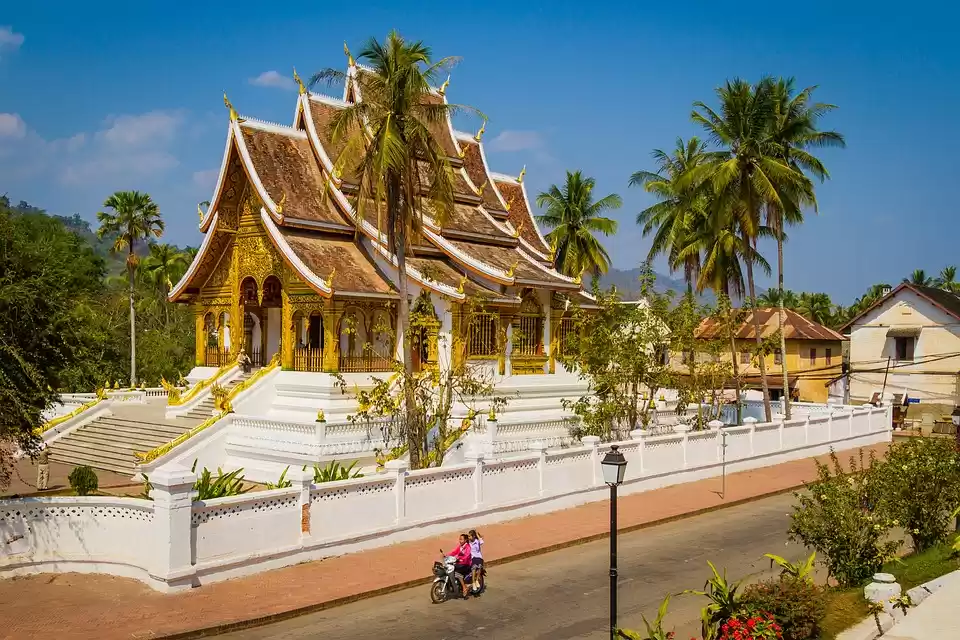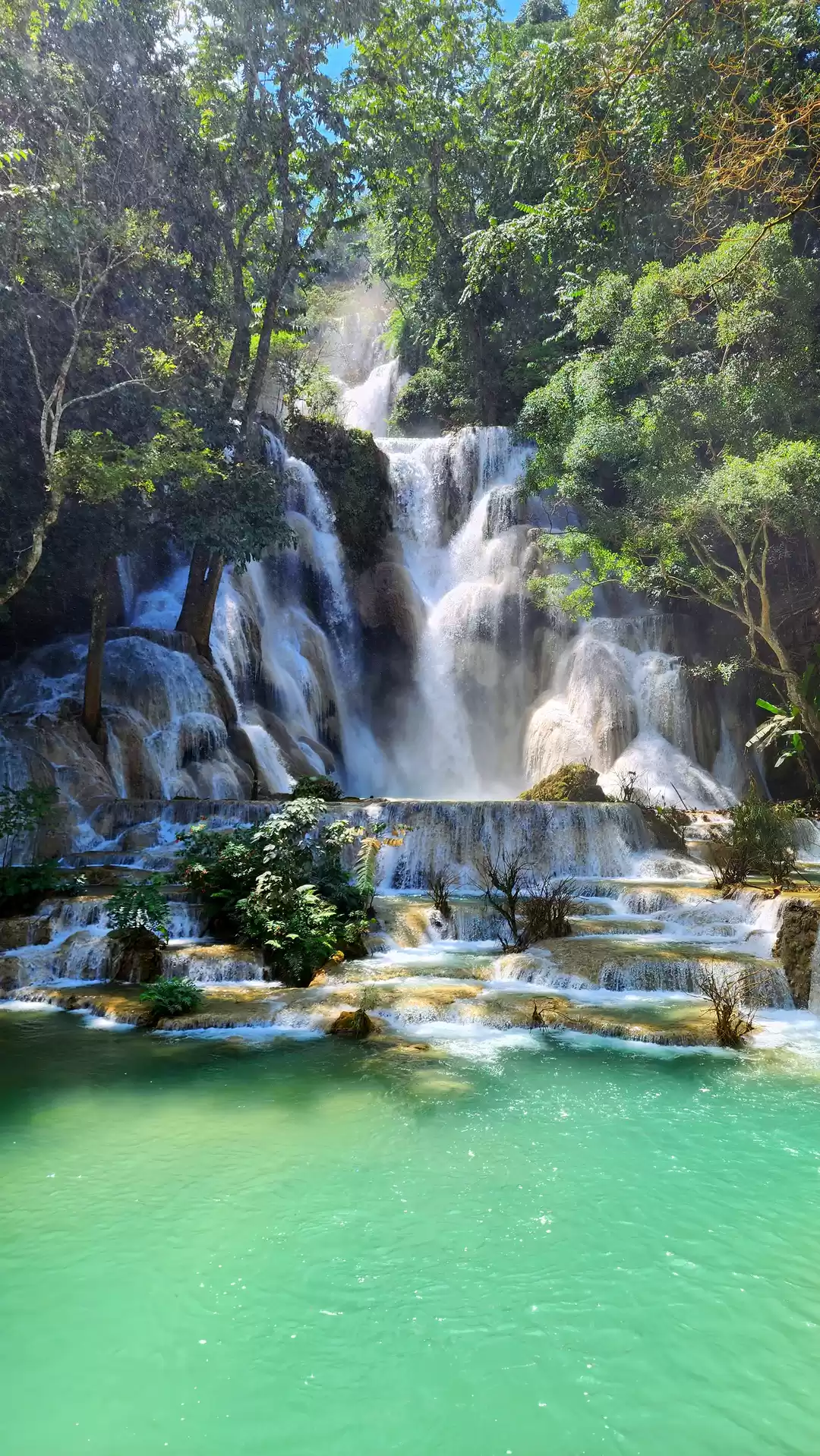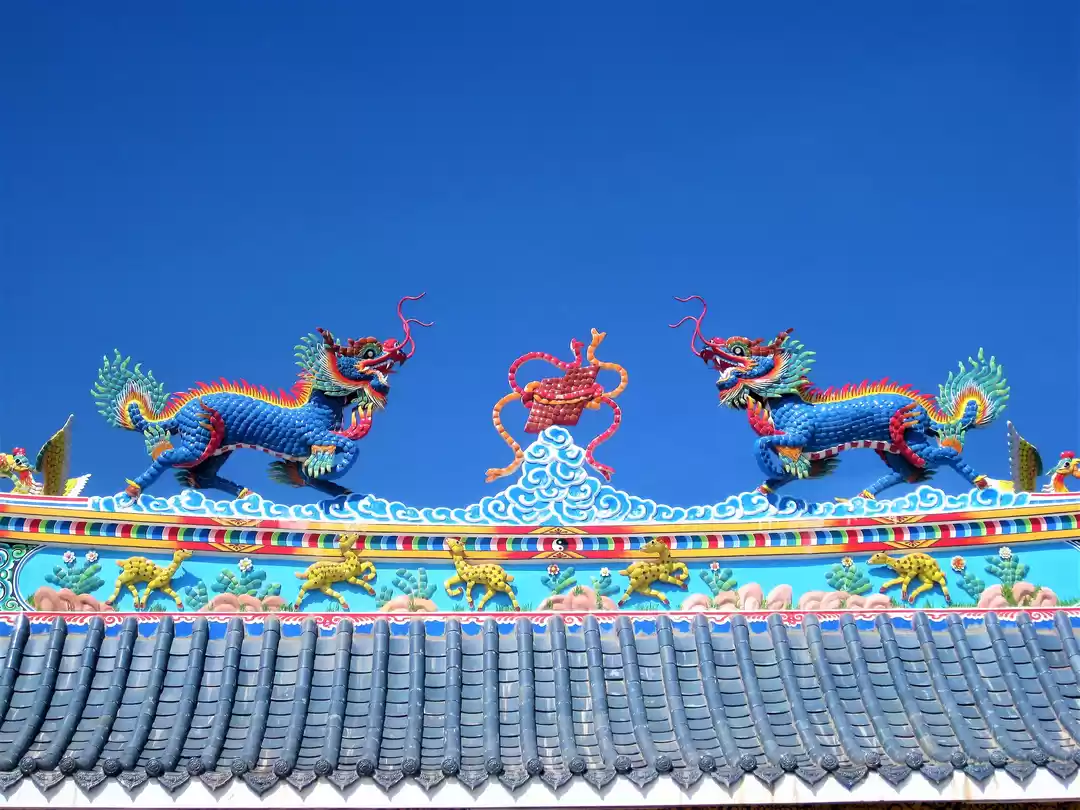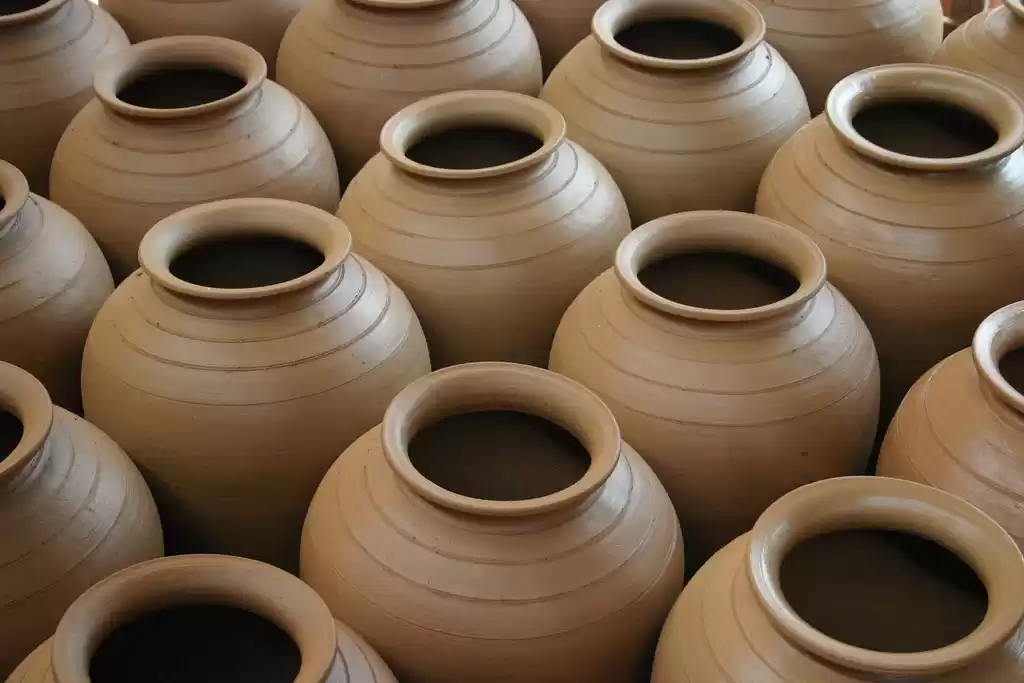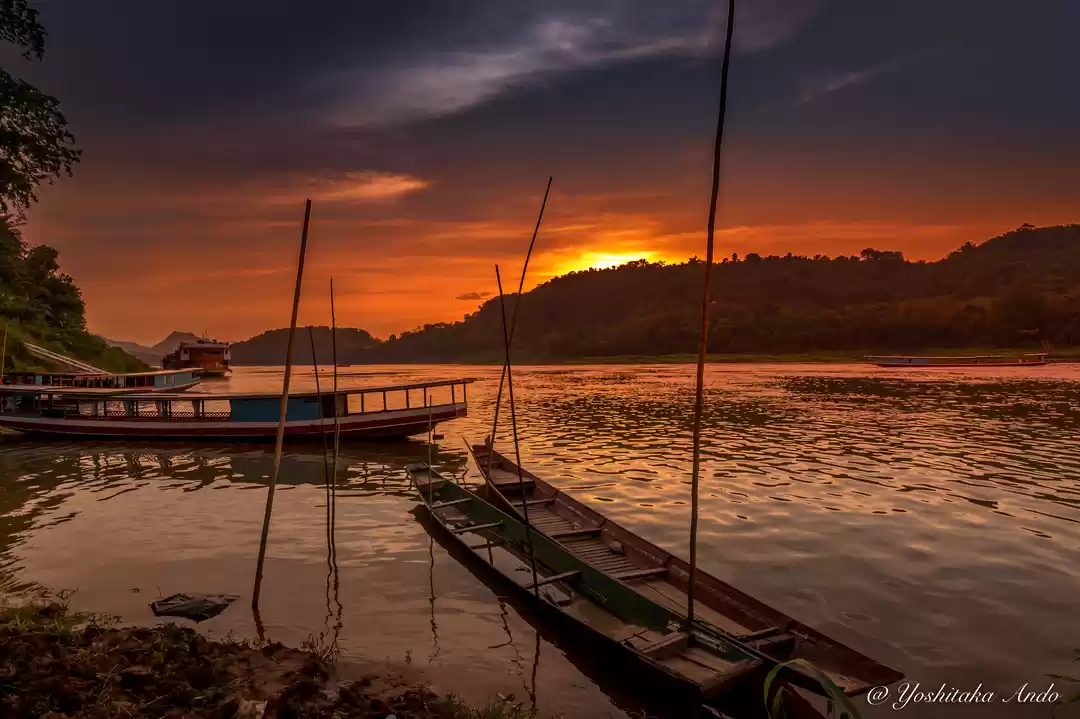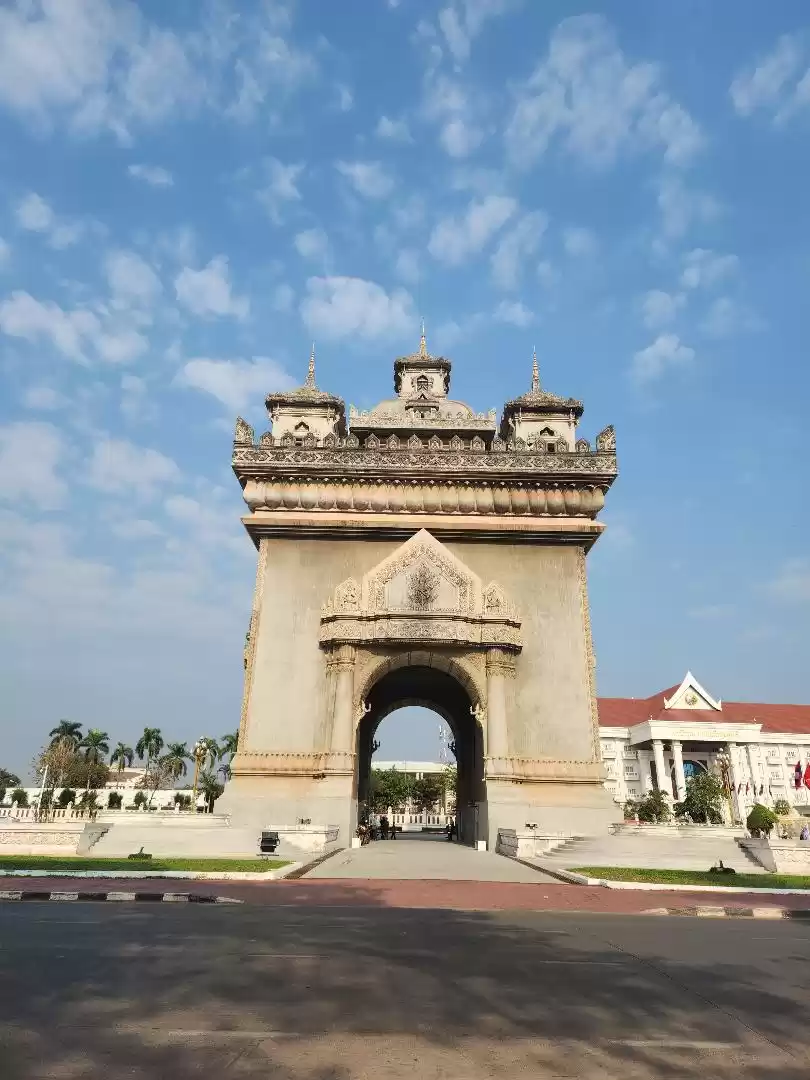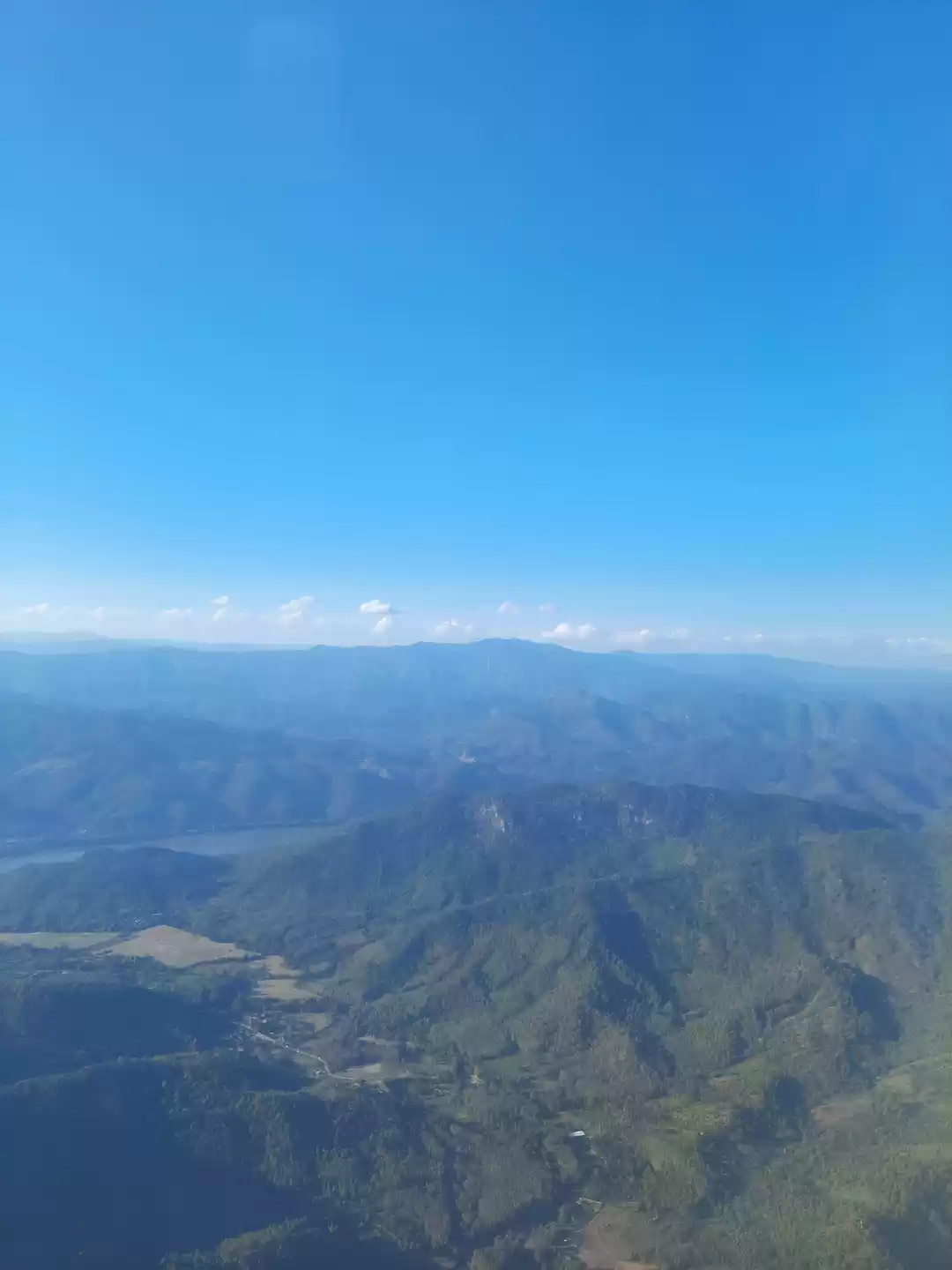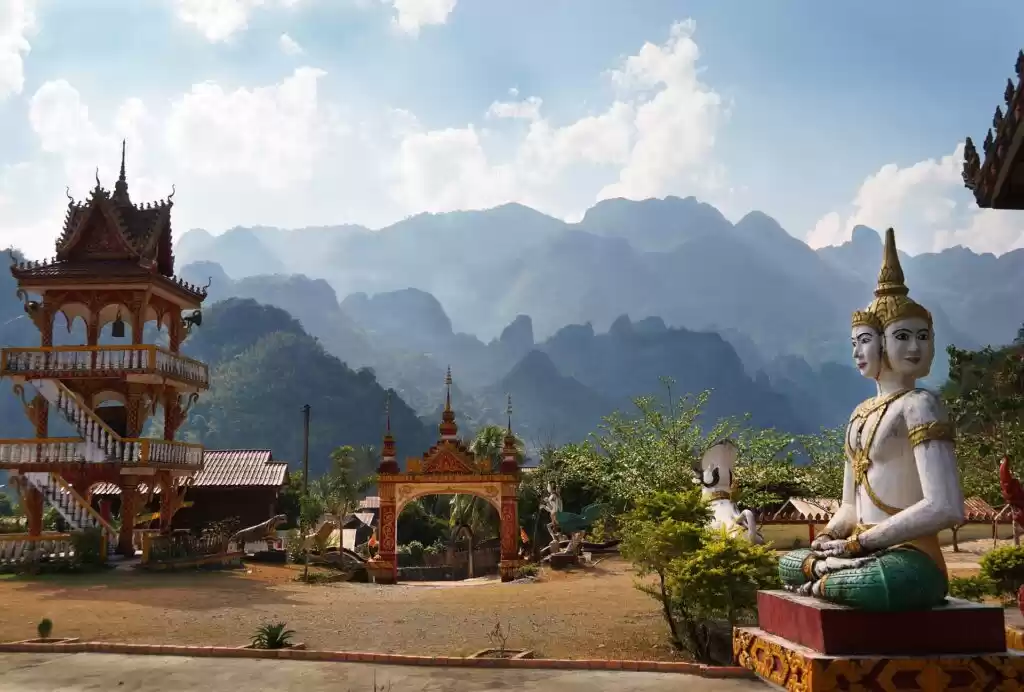
Vientiane (Viangchan in Lao) is the capital of Laos and the largest city. Lying on the bank of the mighty Mekong River rather close to the Thai border, this unusual city presents a strange mix of French and Lao culture, ancient and modern mores, and exotic vibes that are hard to describe or pinpoint.
My visit to Laos was with two spunky women, Tanuja and Pavithra. We landed at Luang Prabang and spent three days there before taking a superfast train to Vang Vieng. After two days of fun and frolic we hired a cab at Vang Vieng and drove to Vientiane. The superhighway was super. We stopped to see the Vang Xang Buddhas in a lonely forest clearing near the village of Phonhong. Once we had reached the capital and checked into our hotel, we took a cab to Vientiane mall, strolled around, made some purchases and sat down to lunch, enjoying some delicious pizza and pasta.
It was really hot during the day, and the sun seemed to be attacking us with a vengeance. We returned to the hotel, rested for a few hours and at 4.30 p.m. booked a cab to go around the city. We were pleasantly surprised when a woman driver appeared. A sweet young girl, named Pae. Our first stop was at Wat Ho Phra Keo (sometimes spelt Haw Phra Kaew). It was first built in 1565 to house the famed Emerald Buddha, which had been brought from Luang Prabang, the former capital. The stupa has since been rebuilt several times. The Buddha remained in the stupa for over two centuries, but now resides in Bangkok in a stupa of the same name, Wat Phra Keo. Its origin is steeped in legend and lore. One version states that it originated in Pataliputra (modern Patna in Bihar) and came to Thailand via Sri Lanka and Cambodia. It made its first appearance in history in the year 1434 at Chiang Rai in Thailand.



Our next visit was to the golden stupa, That Luang, which is the revered symbol of Laos. Legend has it that the orginal stupa dates back to the 3rd century when the Mauryan emperor Ashoka sent Buddhist monks to propagate the religion. They are believed to have brought a sacred relic of the Buddha. However, it seems more likely that Buddism was introduced by Sri Lankan missionaries a few centuries later, but one can never be sure. Later in the 13th century the stupa we now know as Pha That Luang was rebuilt as a Khmer temple, and has undergone many reconstructions over the centuries. In 1563 King Settathirat relocated his capital from Luang Prabang to Viangchan, and in 1566 he ordered the construction of Pha That Luang.


The stupa was often looted by Burmese, Thai and Chinese invaders, and in 1828 it was completely destroyed during a Thai invasion. The present structure was rebuilt after World War II. The stupa even has a statue of the powerful Khmer monarch, Jayavarman VII (1122-1218), who is the builder of the magnificent Bayon temple in Cambodia’s Angkor Wat complex.

In 1707, Vientiane became an independent kingdom, and in 1779 it was conquered by the Siamese. Thai armies destroyed the city in 1827 following a revolt. In 1893 the French came along and colonized it. The stupas were repaired and the town rebuilt. What we see of Vientiane today is French-Lao version. The French re-settled a large number of Vietnamese in Vientiane and other parts of Laos. Vientiane fell to the Japanese in the midst of World War II but was recaptured by the French. Laos gained independence in 1953 with the exit of the French, and Vientiane was chosen as the capital. Then followed a period of civil war. Finally in December 1975, the communist group, Pathet Lao, ‘liberated’ Vientiane and the country came to be known as the Lao People’s Democratic Republic.


We also saw the Patuxai, the French-Lao-style edifice modeled on the Arc de Triomphe in Paris. The black stupa, That Dam, looked rather old and worn out. Pae showed us the Lao PDR Parliament building and the Presidential Palace. Some of the embassies, such as that of France, were housed in impressive colonial buildings. Traces of the French presence, lingering here and there. In the evening we visited the night market and purchased some odd items.
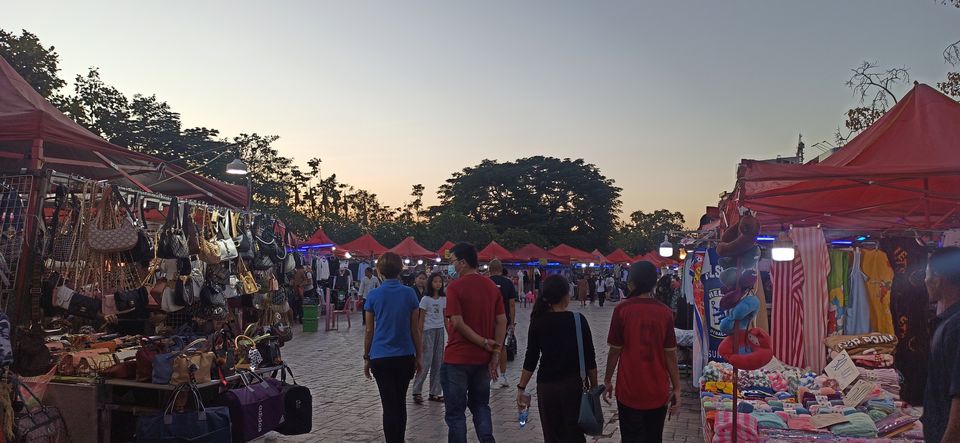

The next morning Pae came at 8 a.m. as promised and introduced us to her husband Loy. Both of them looked like school kids, but we learnt later that they have a 12 year old son who is studying in a Chinese school. The younger generation no longer speaks French, Loy told us, as he drove us around. Chinese is now the lingua Franca, the language of the upwardly mobile. Many businesses in Vientiane are owned by Chinese or Vietnamese.
We arrived at the First Friendship Bridge linking Laos with Thailand. (A second bridge was opened at Savannakhet farther south, and later a third and fourth bridge came into being. A fifth bridge is reportedly under construction.) On the other side of the Mekong lay the town of Nong Khai in Thailand. Before arriving at the Friendship Bridge we spotted a casino in a golden-glitter building somewhat ironically named St. Vegas. Apparently, many Thais cross the bridge to indulge in gambling. A money trap set in an unlikely location I thought, but no doubt it makes good business sense. The people of both countries can move freely to and fro without immigration hassles.
Our next stop was the Buddha Park. We arrived before the tourists, so we had a free run of the place. The Park has dozens of statues of the Buddha as well as other Hindu gods such as Krishna, Shiva, Parvati, et. al. Jatayu is there with a single wing, the other having been chopped off by the demon king Ravana of Lanka. There is also a horse and crocodile.
We walked into the mouth of a demon (or whatever) and came upon a narrow passage with a flight of stairs leading down into an inner chamber where stood several mystifying statues surrounded by human skulls made of earth. Another flight of stairs led to the top of the towering structure atop the demon’s head. The stairs were incredibly steep and my knees being unused to climbing I decided to give it the miss.







Buddha Park is located on the riverside. The view was not really impressive because the water level was low. The Park is well-maintained and has some magnificent trees. It was hot and sunny when we left the Park. On our return we stopped at a nursery, where our green-fingered travel companion, Dr. Tanuja, bought some blooms.
On our way back we stopped to admire the golden Buddhas at a wayside temple. They sat demurely upon lotuses placed atop a huge green seven hooded snake that seemed to protect the Lord with its fearsome hood. Each of the Buddhas exhibited a different mudra, and peace was writ large on their faces. In several other places we found the Buddha resting on a snake, very much like Lord Vishnu. Was the Buddha being depicted as an avatar of Vishnu? The region having had a long history of Hindu and Buddhist influences, this possibility cannot be ruled out. The adjacent building had exquisite pillars with magnificent mirror-work that reminded us of some of the temples in north-western India. he temple was simple though.



Wat Si Muang was our next target. It flashed red and gold, the most prominent divine colours seen all over south-east Asia in the temples or wats. This stupa was built on the ruins of a Khmer Hindu temple. We saw monks blessing devotees by sprinkling water on their heads and tying white strings on their right arms, a scene that reminded us of home. Only the colour of the threads differed.





It was the offerings to the Almighty that really caught our attention. Fish and coke! That really takes the cake, we thought. It seemed as though everything the Lao people relished they offered to the Buddha was well. While the non-vegetarian temple offering may shock the conservative Indians, it is worthwhile to remember there are temples in Kerala offering chicken as prasad. And moreover, Siddharta Gautama was a kshatriya and he ate meat until his last breath (literally speaking!) if historians are to be believed.
The Wat Si Saket Museum was our last stop. The temple is built in the Thai style, and houses over 2000 Buddha images. Built in 1818, it somehow remained untouched by the ravages of war.

How to get there: Well, there are one-stop flights from various airports in India. We took a Thai Airways flight with a Bangkok stopover. Visa on arrival. Keep the change ready (in USD) if you don't want to get ripped off. We landed in Luang Prabang and flew out of Vientiane. You can take the Chinese train to go from place to place. The roadways are excellent too, and the hotel staff will help you hire a cab. The cab will cost you roughly three times as much as the train (if you are a threesome).


